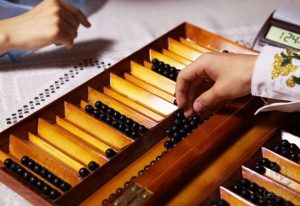




One of the ritual attributes of the shamanic and domestic female sacred practices was the qūmalaq (usually sheep dung), in modern reality more often beans. There are 41 of them. Different combinations of these beans were used to predict the future or the outcome of certain events. Experts believe that a total of 64 divination symbols and this system of divination is figuratively called “mirror of luck” [21]. [21]. This method of divination is widespread throughout Eurasia, both among sedentary and nomadic peoples.
Looking at the semiotics of divination in traditional cultures, N.I. Bondar notes that this divination was called upon at crucial moments of destiny to obtain information that enabled one to adjust one’s actions. The information for divination came from the inhabitants of other worlds (non-human spaces), with whom it was necessary to contact. Divination is one of these tools [4]. There are different types of divination codes (verbal, objective, acoustic, etc.). In this case, divination on qūmalaq most likely refers to a numerical code that allows predictions through numbers and their combinations. A more detailed semiotic consideration of the algorithm of this divination relies on at least two levels: Symbols-Conditions and Symbols-Translators.


